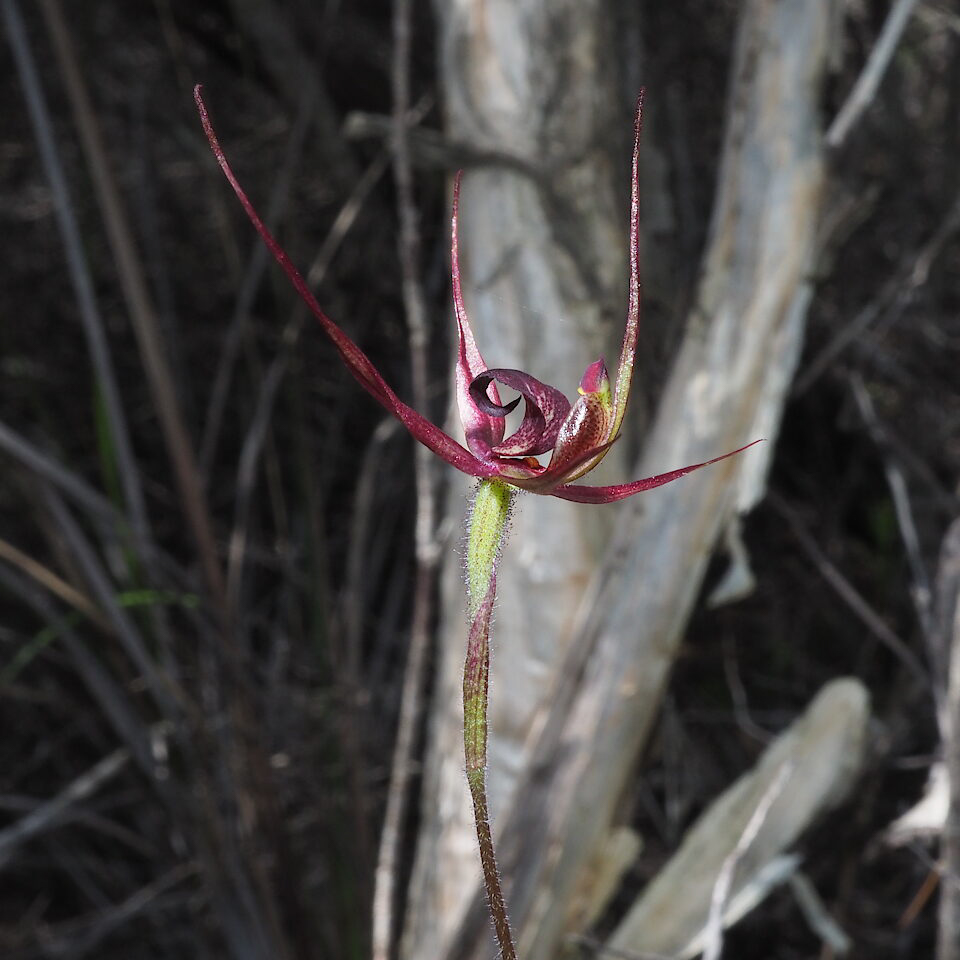The green ark
Words: Daniel Duval, as told to Johnny von Einem
Pictures: Supplied
Inside the SA Seed Bank seed biologist Daniel Duval is storing embryonic forms of Australian flora to safeguard against a dystopian future that, in some cases, has already arrived.
Below, he tells us about his work.
Most of our project work at the moment is bushfire recovery work.
There are some things that we have rediscovered over the years, things that were thought to be extinct that we rediscovered. But at the same time, there’s things we’ve lost.
A classic example would be a Kangaroo Island spider orchid, this beautiful little spider orchid, red thing.
It’s got these little legs that stick up, and all our spider orchids normally sit down. So it’s got some sort of unique pollinator. We don’t even know what the pollinator is, were trying to work it out. But it’s almost extinct on the mainland.
We’re hoping that KI is like the bio-ark for a lot of things that aren’t well conserved.

Seed conservation has to happen.
I think it’s insurance. It’s safeguarding some of our flora. But I see it as the minimum that we can do.
It was meant to be for 20 years away, 30 years away. Not for now. This is for perpetuity.
We’re using these collections now.
We collected a greenhood orchid just by chance before the fire went through Cudlee Creek. There was a little population we’d been monitoring for years. It didn’t bounce back, so they’ve put an exclosure on the site.
So what our role is now, it is plant conservation.
I don’t know, we spend our time looking down microscopes thinking this is important, but over the years you get to realise you’ve got to do something.
It’s pointless us doing what we’re doing if no one knows about it.
That’s why we’ve got 3D images, we’ve got these spectacular photos, and we got post stamps. You’ve got to engage people in some way. At least then they can say, ‘Well, what is it?’
Colleagues of mine who are purists say it’s tokenism, but I’m going, well, what else do you do?
Our legacy is this green inheritance that we’re leaving behind and the information we’re trying to capture about it to share.
—

Left: Creeping Raspwort (gonocarpus micranthus).
Middle: Tiny Goodenia (goodenia micrantha).
Right: Pink Gland Flower (adenanthos macropodianus) seeds hide among the plant’s leaves.
—

Left: Kangaroo Island’s lemon-scented Pink Zieria (zieria veronicea ssp. insularis).
Middle: Open Marshwort (nymphoides geminate) is a botanical unicorn, not recorded in South Australia since the ‘60s – until this seed was discovered in 2021.
Right: Saddle-leaf Phebalium’s scientific name, leionema equestre, refers to the tissue on the seed’s side.
—

Left: Rough logania (logania scabrella) – seed or inflatable pool lounge?
Middle: Oblong-leaf Guinea Flower (hibbertia glebosa ssp. oblonga).
Right: The green outer layer of the Sweetheart Leaves (olax obcordate) seed is a food reward.
—


